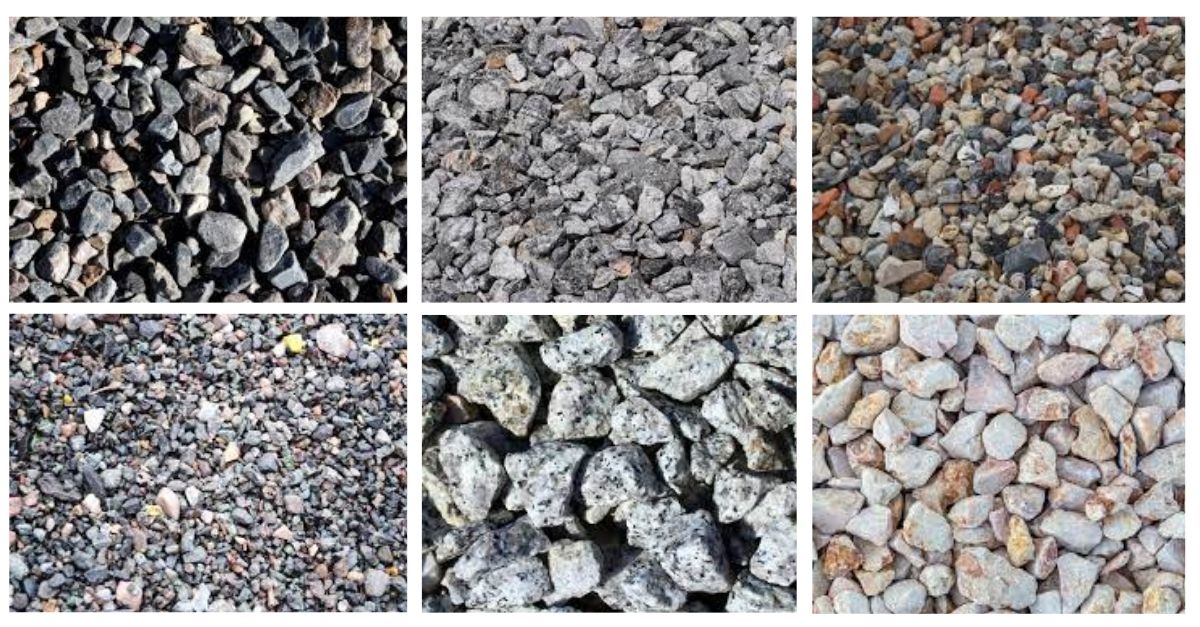Aggregates are inert filler materials for making concrete mixes. They form 60-80 percent volume and 70-85 percent weight of the concrete. The chemical and physical properties of the aggregates have a great bearing on the structures they form. Their compressive strength, thermal and elastic properties, and dimensional stability are key considerations in selecting good quality aggregates. Various variables influence these qualities, including shape, size, weight, gradation, and moisture content. You will have a better idea after reading this article about the qualities of good aggregates for concrete. This article will serve as a reference point for choosing good-quality aggregates. Furthermore, it will shed some light on the types of aggregates and their properties.
Qualities of good aggregates for concrete
1. Grain Size
Often the use of more coarse aggregates brings in greater economies. The larger aggregate size limits the need for cement and water. It brings down the overall cost of concrete. Moreover, less water use also lowers the chances of shrinkage and cracking due to weather changes.
Types of aggregates based on grain size
● Coarse Aggregates
The coarse aggregates on the IS Sieve of 4.75mm are retained (cannot pass). The most common coarse aggregates are crushed stone and gravel. In cement concrete, the maximum aggregate size is 40 mm.
● Fine Aggregates
Fine aggregates are those that pass through a 4.75 mm IS Sieve. Fine aggregates account for 35 to 40% of the total volume of aggregates used in concrete. The most common fine aggregate is sand, which is made mostly of silicon dioxide in the form of quartz.
2. Shape and texture
In general, the shape and texture have a greater bearing on the fresh concrete than the hardened one. Smooth and rounded aggregates work better than rough, elongated, or angular ones. Most natural aggregates are smooth and rounded due to the natural gradation process. Hence, the sands and gravels from riverbeds and seas shores make excellent aggregates. Angular and elongated aggregates such as crushed stone need more cement paste for proper workability.
However, they do bond better than the smooth ones.
Common types of aggregates based on their shape
● Rounded Aggregates
Rounded aggregates occur naturally in the form of seashore gravel. Their shape minimizes the percentage of voids (32-33%) and lowers the cement-water ratio. However, they show poor inter-locking behavior and weak bond strength. As a result, they are unsuitable for high-strength concrete and embankment.
● Angular Aggregates
Crushing massive boulders produces angular aggregates. They have well-defined and sharp edges. They feature a high percentage of voids (38-45%), making them difficult to deal with. However, they have higher bond strength and better interlocking property. As a result, they are quite suitable for producing high-quality concrete.
● Flaky Aggregates
An aggregate is flaky if its least dimension (thickness) is less than 60% of its mean dimension. The uneven shape creates more voids and requires more cement slurry for binding. These properties limit their usage in the construction industry.
● Elongated Aggregates
Elongated aggregate has its least dimension (thickness), less than 180% of its mean dimension—their higher void percentage results in poor workability. At the same time, the low crushing strength makes them unsuitable for high-strength concreting.
3. Gradation
Aggregate gradation means the distribution of particle sizes in optimal proportions to obtain desired concrete quality. The proportions of fine and coarse aggregates will vary depending upon their end-use and the desired finish. Once a grade is selected for a project, both fine and coarse aggregations should fall within that gradation limits. It helps to achieve consistency throughout the batches. Additionally, that also helps determine the cement paste requirement for the concrete. This cement paste depends upon the void spaces and total surface area that needs covering. Uniformity in particle sizes increases the voids. Hence, the paste requirements further result in reduced workability. Therefore, it is important to achieve an optimal particle size distribution.
4. Moisture content
The porosity of the particles and moisture in the storage area affects the moisture content of the aggregates. Some aggregates have low moisture content; for example – gravel has mere 1% moisture content. Whereas some have a very high moisture ratio. For example- sandstone and expanded shale have 40% moisture content. In general, aggregates exist in four different states – oven-dry (OD), air-dry (AD), saturated-surface dry (SSD), and wet. Most coarse aggregates exist in the AD
state and have an absorption ratio of less than one percent. On the contrary, fine aggregates usually exist in a wet state with surface moisture of up to five percent. High moisture absorption increases the volume and causes the problem of bulking.
5. Bulk Density
The density of the aggregates establishes weight-volume relationships. Bulk density is the volume that an aggregate occupies in the concrete. It considers the solid particles and the voids between them to calculate the volume. Furthermore, the bulk density is affected by the moisture content of the aggregates. Hence, these densities are very important for proportioning aggregate mixtures.
Types of aggregates based on bulk specific gravity
● Lightweight:
The aggregates in lightweight concrete can be either natural or artificial. They usually weigh less than 1,100 kg/m3
● Heavy-weight:
The aggregates in heavy-weight concrete can be either natural or artificial. They usually weigh less than 2080 kg/m3
● Normal-weight:
The aggregates in normal concrete weigh 1,520 – 1,680 kg/m3
Qualities of Good Aggregates | The Final Verdict
Aggregates are not mere insignificant stones or inter-fillers. They have a high impact on the concrete’s strength, durability, and workability. Besides the properties mentioned above, a few other characteristics make good quality aggregates. For example- aggregates should be strong, dense, and clean. They should be free from adherent coatings and disintegrated pieces.
Furthermore, one should avoid friably and chert aggregates as these are susceptible to splitting and cause popouts. Conclusively, choose a good quality that suits your projects’ design and construction needs. We tried our best to share our views regarding the qualities of good aggregates for concrete. Please visit our homepage for any other construction-related articles.


Leave a Reply